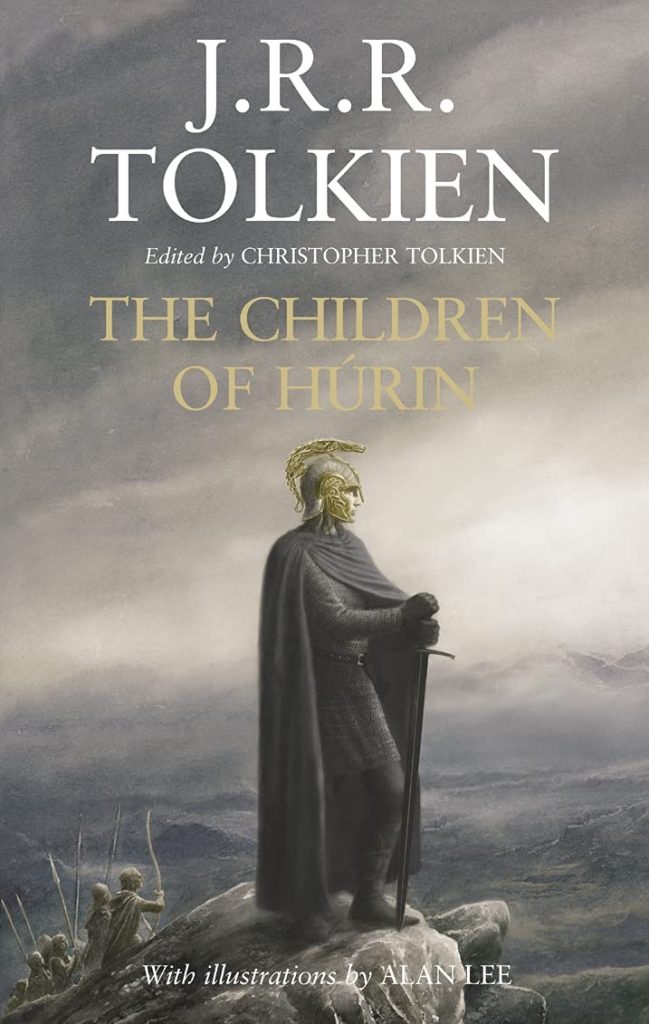

Another of my occasional archival posts.
The basic premise of this story is that one can’t cheat fate. I’m not going to synopsise the story. Let other folk do that! (Plenty have.)
Whatever our current views of such an ancient idea as fate might be – the Final Destination movie series is one contemporary take on it – there’s no doubt that in Tolkien’s world it tends, more often than not, to be unpleasant. In this instance Tolkien really goes for the darkest of pagan vibes, with a selection of themes that might be equally at home in the harshest of Nordic, or even Greek tragedies.
Apparently Tolkien worked on a sequel to LOTR, but abandoned it, because it was, according to his son Christopher, “too dark”. In much the same way, the story told in Children Of Hurin shared a similar fate, never reaching completion in J. R. R.’s own lifetime. Elements of the story first appeared in The Silmarillion, itself the first of Christopher’s works as literary executor, after his father’s death.
I first read it, many, many, many years ago, as a young teenager, in that incomplete state, and under the title ‘Narn I Hîn Húrin’ in a volume entitled Unfinished Tales. It was captivating then, and perhaps even more tantalising due to its incompleteness, like a partial fossilised skeleton might be to an archaeologist, biologist or palaeontologist.
So it was exciting to learn that Christopher Tolkien had revisited his fathers archives and put together a complete version of this bleakly compelling, highly enchanting tale. I have long hoped he might be able to do likewise for the story of Tuor, and the fall of Gondolin (I believe he may have?).
Tolkien inspires such devotion and admiration amongst a part of his readership, to which I belong, I guess, that many of his readers enjoy learning about the evolution, the archaeology if you will, of his work, and Christopher’s subsequent part in this. How Christopher managed to finish this particular unfinished tale is included in this volume, and was in itself fascinating.
But, ultimately it’s the story, and Tolkien’s gift for creating a believable world that contains such unbelievable elements as magic, elves and dragons, that lies at the heart of the success of this book. I’m not a fan of fantasy literature as a whole. Most of it seems to me so poorly conceived and written it puts me off rather than draws me in. Tolkien’s obsessively scholarly depth and detail mark his work out as a rare exception in the genre.
I absolutely adore this story. And that’s what’s getting five stars in this review. I’m a little less keen on the recent Alan Lee illustrated editions, to be honest. I have no beef with Lee, per se. It’s just that, aside from Tolkien’s own artworks, I prefer to let his words and my imagination give rise to how I see his creations. Having someone else’s visualisations kind of gets in the way a bit, for me.
And that’s why ultimately I feel all the Peter Jackson stuff, and how it’s popularised Tolkien’s oeuvre, has been (for me) a difficult or troubling issue. More on this, perhaps, in some other Tolkien related posts?
But, for a work of dark powerful fantasy, with the power of ancient myth, The Children of Hurin is great.
